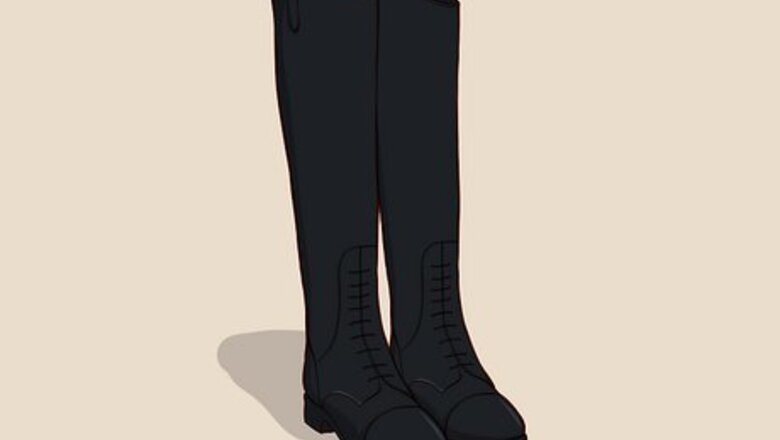
views
Wearing the Proper Shoes
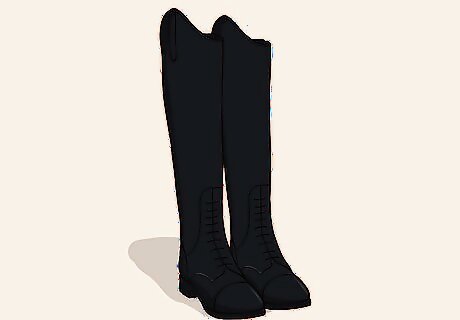
Wear a pair of sturdy supportive shoes. Pick a pair of shoes that protects your feet and legs from injury. They should come up over your ankle so there is no risk that low laces or tongues will get caught in the stirrups. Look for shoes with a strong shank that support your ankles. It is a good idea to invest in some short riding boots, which are less expensive than tall ones and have hard toes to protect your feet from hooves. Saxon is a good brand. If you are just starting then get a low pair instead of a tall pair just to make sure you like riding before you spend a lot of money on tall boots.
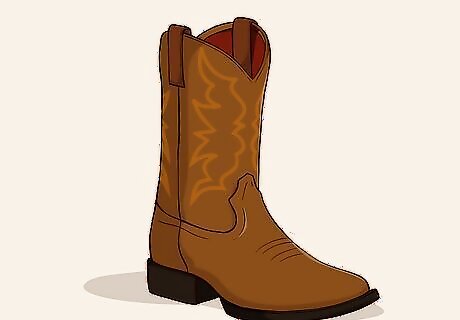
Choose shoes with a 1.5 inch, or 3.8 centimeter, heel. A shoe with a small heel will keep your feet from slipping out of the stirrups. English or western boots is your best option in lieu of official riding shoes.
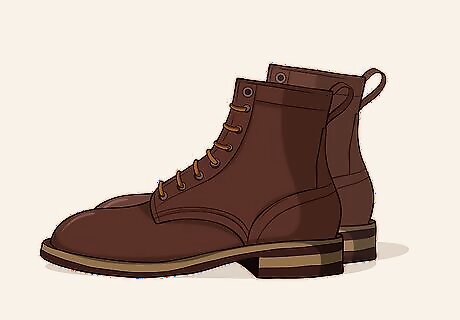
Look for shoes with proper traction. Look for shoes with a medium tread to provide the appropriate level of traction. Cowboy boots with a smooth leather sole will be too slippery and put your feet at risk of sliding out of the stirrups. On the other end of the spectrum, shoes with heavy waffle tread may be dangerous if you fall. Tread that is too heavy can cause your shoe to jam in the stirrup. The soles of English boots have small grooves in them, as should your shoes.
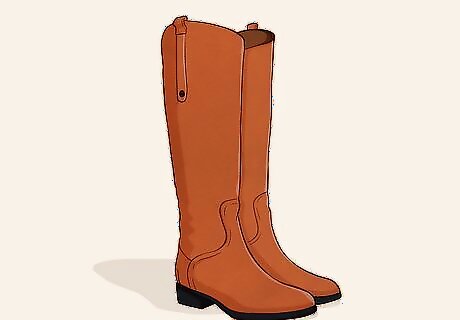
Invest in official riding shoes. Protect your lower leg and support your ankle as you become a more advanced rider. Look for relatively affordable, standard leather riding boots or riding sneakers that offer the necessary arch support. They usually start at $100. If you're riding English-style, invest in a pair of paddock boots.
Picking the Best Pants
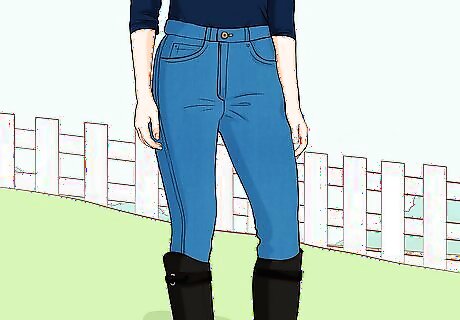
Wear jeans that fit you well. Always wear a long pant to protect your legs from chaffing against the saddle. Jeans should be tight enough so that they won't slip off or get caught on anything, but loose enough that you can still lift your leg without difficulty. Try stretchy jeans or jeggings without an inside seam for more flexibility. Leggings will be much better than jeans as jeans will chafe and get quite hot. For Western-style riding, jeans are your best bet. The uniform for English-style lessons, on the other hand, gets more specific as you advance.
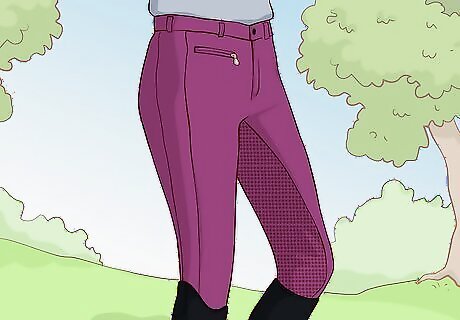
Invest in jodhpurs or breeches. If you are getting serious about your English-style lessons, consider buying a pair of these stretchy riding pants to increase your leg flexibility. The fabric is sturdy enough to keep you from getting pinched in the saddle but stretchy enough that you can move around freely. You even get extra defense against injury with suede or faux-suede knee patches. If you want, a cheap pair of leggings will do almost the exact same thing.
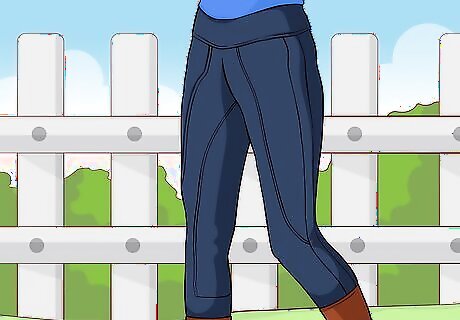
Choose warm riding pants in winter. Improve your performance and leg-grip with wind resistant riding chaps. You'll not only have an extra strong grip on your horse, but also a higher tolerance towards cold winds. Half chaps that go from your knee to your ankle are also a good investment for lower leg protection. Fleece riding pants, long underwear, insulated ski pants, or wind pants are best to keep the cold air at bay during your winter lessons.
Choosing an Appropriate Top
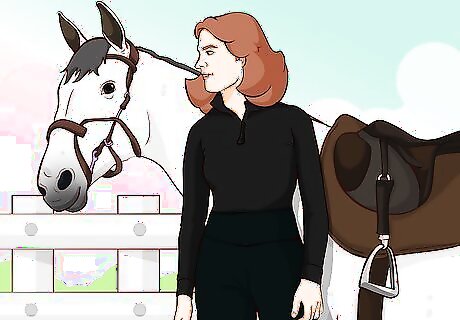
Wear a fitted t-shirt or sweater. Choosing a top for your lesson is relatively simple since any well-fitting top that allows you to move around will do the trick. It's more important for you to avoid certain styles like tank tops with thin straps or long, loose sweaters and t-shirts that might get tangled in the riding equipment. Wear a brightly colored top for added visibility while you ride. Keep your arms and shoulders free while still layering for warmth with a vest.

Go with a polo shirt. You'll feel like an expert at your very first riding lesson in a professional looking polo shirt. If you wear this traditional English-style top, you will demonstrate how serious you are about learning to ride and make a good first impression on your instructor.
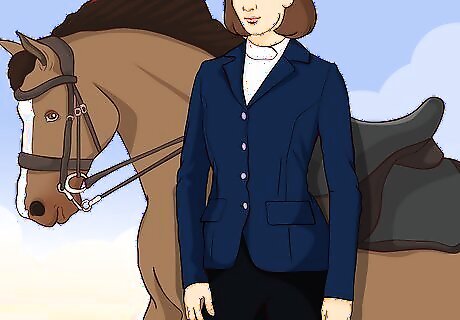
Invest in a coat made especially for riders. If you plan to ride in the cold on a regular basis, a riding coat provides room through the torso so you can stay warm without restricted movement. Gussets make room for your jacket to spread across the saddle rather than get tucked under you. Many of these special coats come with reflective patches that will give you extra visibility on the trails.
Sporting Safe Headwear

Always wear a helmet. At any moment your horse might get spooked, or stumble and accidentally throw you off. The best way to ensure your safety is by wearing a ASTM/SEI certified riding helmet. ASTM/SEI certification denotes a quality standard that has been tested specifically for horseback riding. If your riding school does not provide a helmet, you will need to buy one. Helmets usually start at $30 and go up to $300.
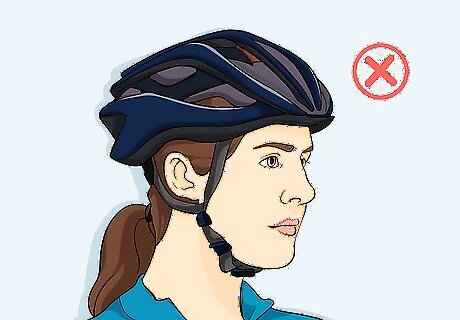
Avoid using a bicycle helmet. Bicycle helmets are designed to protect you from bicycle injuries. They leave the back of the head, the forehead, and the sides of the head vulnerable if you come into contact with a horse's hoof. A bike helmet is simply too flimsy in case you fall. However, a riding helmet will do much better than a bike helmet for any occasion.
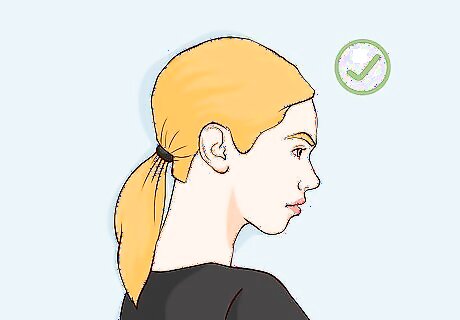
Tie your hair back. Keep your hair out of the way by pulling it into a low ponytail or bun that won't interfere with the comfort of your helmet. Loose hair can get caught and make it harder for you to see. If you fall and your horse steps on your hair it might be painful.
Accessorizing for Varying Temperatures
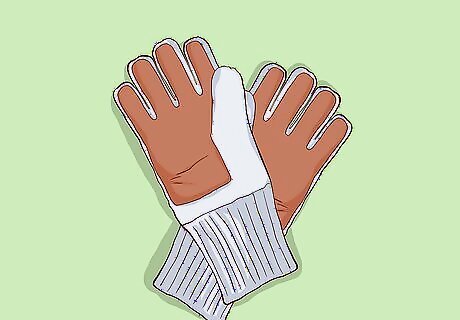
Wear wool-lined leather mittens to protect your hands. Gloves will safeguard your hands against chafing caused by the reins. For this reason, many riders opt to wear riding gloves all year round. Skinny nylon gloves are slippery and provide a less-than-ideal shield against wind. A good pair of gloves will help you maintain a strong grip on the reins while protecting your hands against the cold. You can buy mittens that have a separate area for your pinkies if you are riding English.
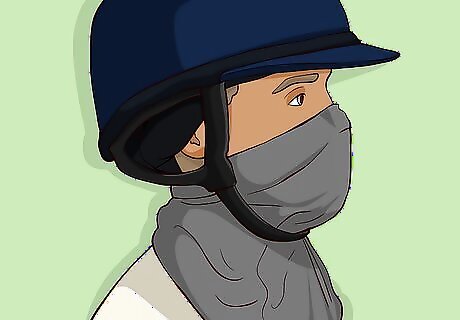
Keep your head, face, and neck insulated with a hat liner or a heavy headband. Preserve heat under your riding helmet by adding extra layers like a fleece hat liner or headband. Take it even further with a cap and face mask combo. In case of wind, protect your neck and chest with a neck warmer to prevent chapping. Keep in mind that even with a hat, your helmet should still fit snugly. A loose helmet will become useless if you fall.
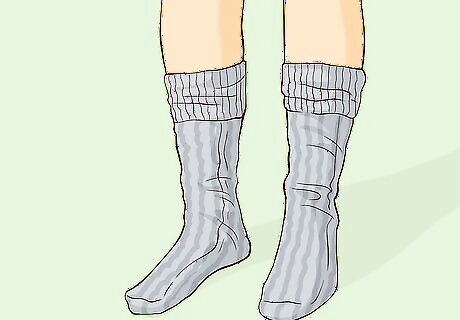
Wear wool socks or chemical toe warmers in cold weather. Add a thick layer under your cool leather boots to keep your feet toasty warm on the coldest of days.
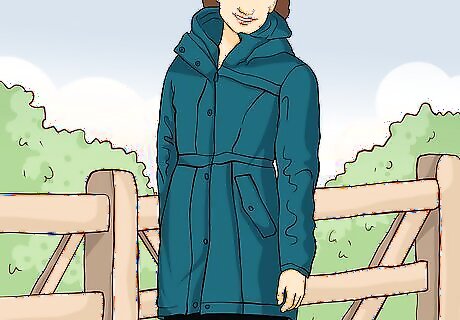
Wear a fitted raincoat or poncho in case of rain. If it rains during your lesson wear a fitted raincoat that will give you the flexibility to move around as needed. If you don't have a raincoat, do not bring a poncho. It is likely to spook your horse and add extra distractions to your ride. As a beginner you can get away with wearing rubber boots or wellies to a rainy lesson.
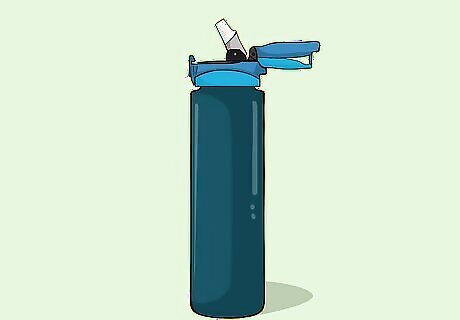
Bring a water bottle. Horseback riding can get hot very quickly so don't forget to bring a water bottle to your lesson. Try a camelback, or hook a bottle to your saddle on particularly hot days.













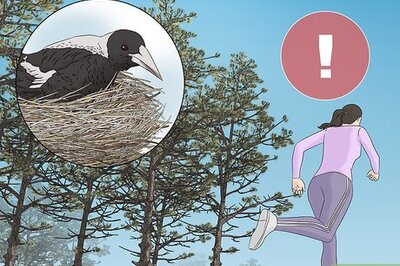






Comments
0 comment